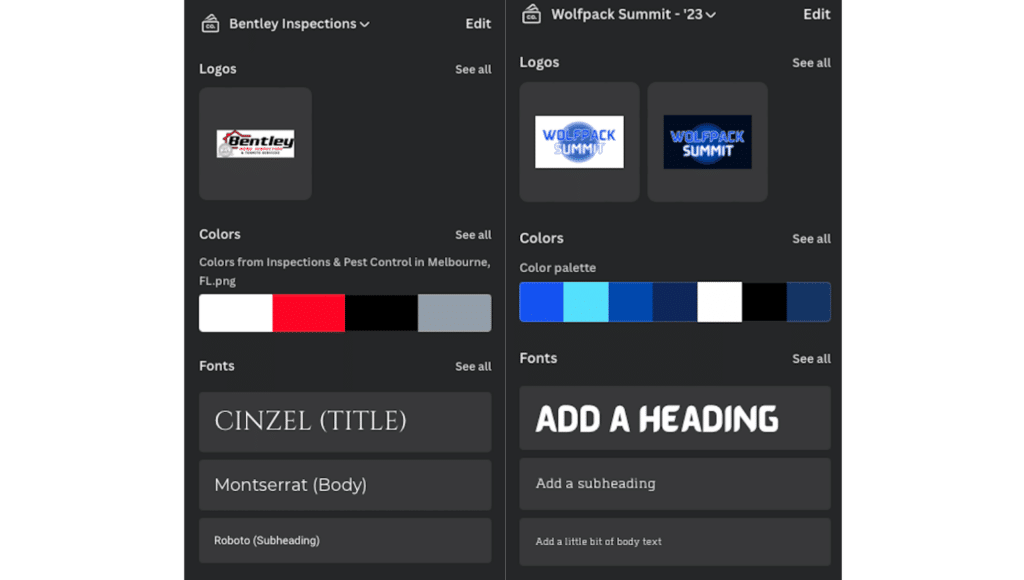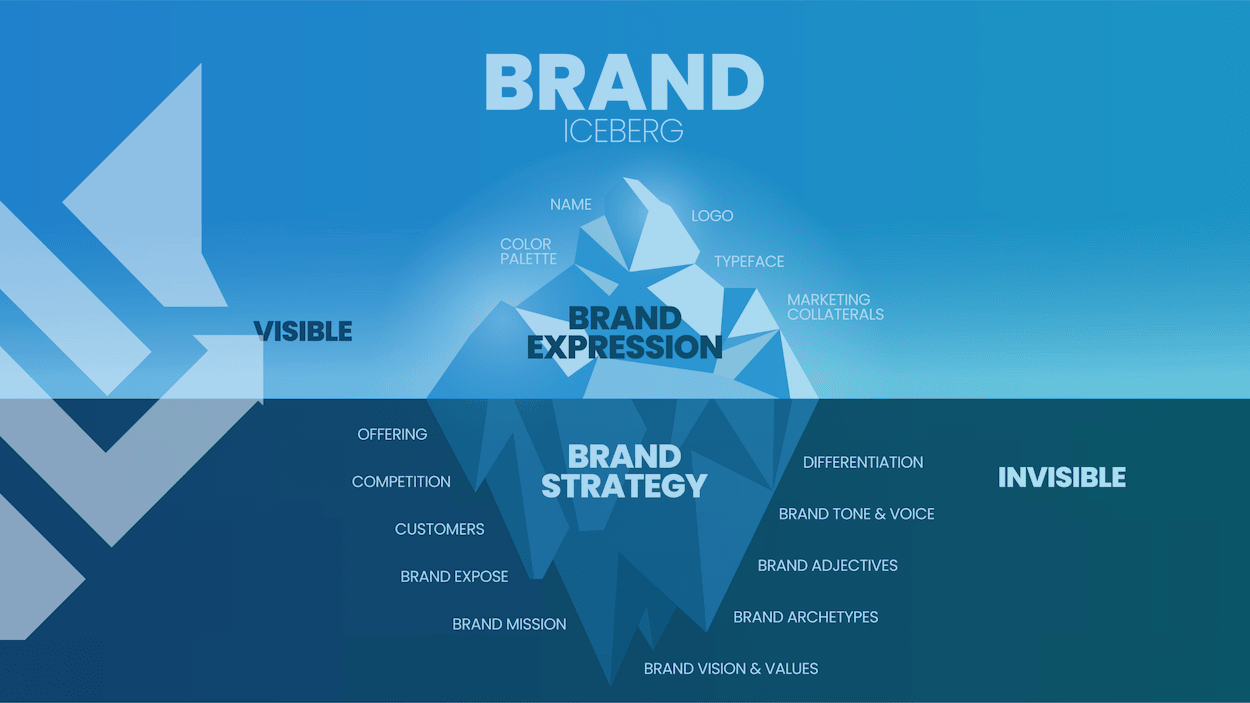Last updated on February 3rd, 2025 at 04:47 pm
Elon Musk famously said, “Brand is just a perception, and perception will match reality over time.” Your brand is much more than just a logo, colors, and expensive marketing. Your branding is your business, and it is critical to your success.
In today’s competitive world, establishing a strong identity for your brand can help you stand out from the competition and attract loyal customers. This guide will provide you with actionable tips to help you develop a winning brand that resonates with your target audience.
What Is Brand Development?
First, what is brand development? Brand development is the process of creating and reinforcing an identity for a company such as colors, logos, mission, vision, core values, and other items. A company’s brand development is never complete and is an ongoing process of refining the perception of a brand.
Here’s a little bit more detail that might help you out:
Your brand development starts with a brand strategy and identity. A brand strategy and identity utilize a brand kit to help fulfill the marketing strategy around your brand. Altogether, this creates the brand perception customers receive. All of the actions and processes you take to fulfill the brand perception are your brand development.
Knowing this, let’s break down the action steps to brand development.
Action Steps To Brand Development
1. Conduct Market Research
Market research is the process of gathering and analyzing information about a particular market, including its size, trends, competition, and customer preferences. It is crucial to understand your target audience and their preferences. You need to know who your customers are, what they want, and how you can meet their needs better than your competitors.
To start, evaluate your current industry and the needs of the customers. Truly understanding the customer, who they are, their specific needs, and their frustrations will help you better align your brand with their wants. To help you with this, start asking potential customers!
Studying your competition can also help you identify unique selling points that set your brand apart from others. Analyze their strengths and weaknesses, and look for opportunities to improve your own brand.
SWOT Analysis
This is where the SWOT Analysis can come into play. SWOT stands for strengths, weaknesses, opportunities, and threats. Here’s a little bit definition:
Strengths – what your company is good at
Weaknesses – what your company could be better at that a competitor might take advantage of
Opportunities – external opportunities your business has to grow
Threats – external threats to your business, such as competitors, or the economy
After reviewing the market, analyzing customer needs in more detail, and conducting a SWOT analysis, you are more prepared to develop your brand.
2. Define Your Brand Identity
The second step in developing a successful brand is to define its identity. A brand identity encompasses various aspects such as your company’s mission/vision statement, values, personality, culture, and tone of voice. Take time to define these elements, so you have a clear understanding of what your brand stands for and what messages it should convey. This clarity will help you create consistent messaging across different channels, making it easier for your customers to recognize and remember your brand.
Remember to utilize the notes you have taken from the market research step to help you align your branding with the wants of customers. After you have the brand identity, you can begin to create brand visuals that aid in showcasing the identity.
3. Develop a Strong Visual Identity
Your brand’s visual identity is what people see when they interact with your business. It includes elements such as your logo, typography, color scheme, and graphic design. A well-designed visual identity can evoke emotions, communicate values, and build trust with your audience. Invest in professional designers to create a cohesive and memorable visual identity that aligns with your brand values. Make sure your visual identity is consistent across all channels, including your website, social media, and marketing materials.
Canva makes it super easy for small businesses to create a visual identity through brand kits. They help ensure your branding is always shown in marketing graphics created through their platform. Although, we recommend having a logo professionally designed.

Canva brand kits.
4. Create Quality Content & Foster Relationships
High-quality content is essential for building brand awareness and attracting leads. Create content that offers value to your customers, whether it’s blog posts, videos, social media posts, or podcasts. Your content should align with your brand identity, and messaging and be tailored to your target audience’s needs. Always aim to provide informative and engaging content that sets you apart from your competitors.
Consider aligning your business with a marketing agency that can help execute your brand through social media management, web designs, and blog writing. Or, ensure your team can execute the same thing in-house.
After focusing on creating quality content, turn your attention toward employee training for your brand. Your brand is not just words or visuals, it is also how your people execute their daily duties. Consider how your brand should be shown in everyday activities like customer service.
Building strong relationships with your customers can help you create a loyal fan base that advocates for your brand. Engage with your customers on social media, respond to their messages and comments promptly, and offer excellent customer support. Encourage customer feedback through surveys, reviews, or focus groups, and use this information to improve your brand’s products, services, and experiences.
5. Review & Adjust Brand Development
It’s not just enough to set your brand and forget it. Remember, brand development is ongoing. Therefore, you need routine checkups on your brand perception to ensure it is aligning with the goals you set out before.
In addition, you should review customer needs to ensure your brand is still fitting with consumer wants as market conditions do change.
Here are a few strategies to help you review and adjust your brand development:
- Consider conducting new marketing research every 3 – 5 years. Doing so will help you stay aligned with market trends.
- Review your brand perception to ensure you are meeting goals. Conduct surveys, review company social media, collect reviews, and set focus groups to ensure your company is meeting demands.
- Conduct secret shopping in your business to ensure employees are executing the brand. Consider additional training for employees if needed.
- Check your business sales and key performance indicators (KPIs). Low-performing KPIs or slowing sales can be caused by a misaligned brand.
Frequently Asked Questions
Q: Why is defining a brand identity important?
A: Defining a brand identity provides clarity on what a brand stands for and its messaging across all channels. This clarity makes it easier for customers to recognize and remember the brand.
Q: How can I foster customer relationships?
A: Engage with customers on social media, offer excellent customer support, encourage customer feedback, and use this information to improve your brand’s products, services, and experiences.
Final Thoughts
Brand development is a lot more than just creating a logo. True brand development takes market research, creating an identity, creating visuals, employee execution, and adjustments.
While developing a strong brand requires time, effort, and investment, it is worth it in the long run. By following these tips, you can create a solid foundation for your brand that resonates with your target audience and helps you achieve your business goals. After all, your brand is perception and brand perception will match reality over time.




